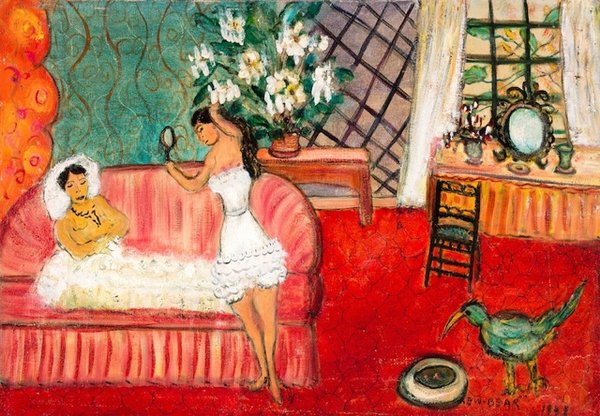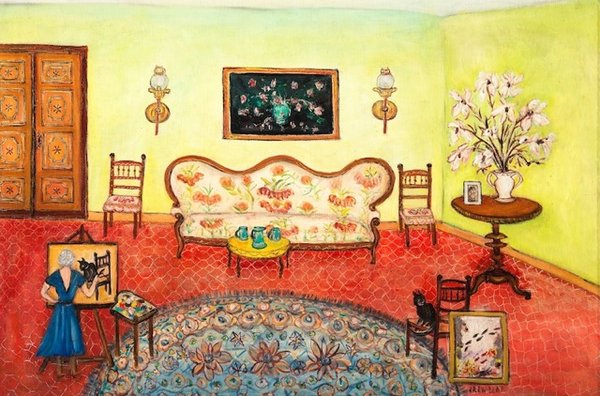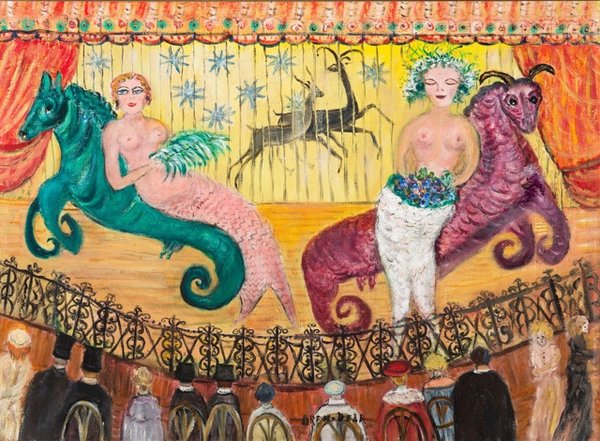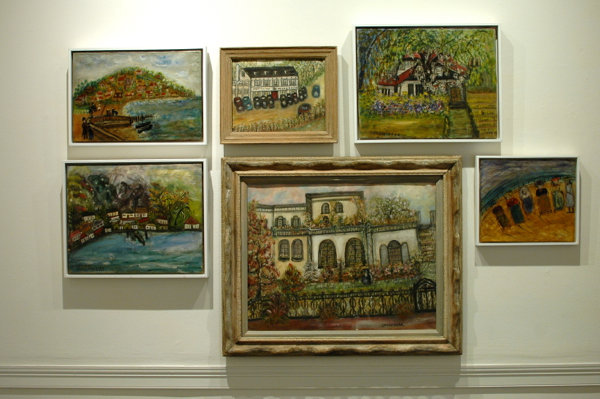[Irena introduces us to a little-known Philadelphia artist worthy of appreciation for her rich imagination and distinctive painting style. — the Artblog editors]
Stories and Dreams, a spring-flavored exhibition at the Woodmere Art Museum, showcases the late Jessie Drew-Bear, an overlooked Philadelphia artist who painted with an advanced whimsicality and rich narrative imagination.
Whimsy rooted in real talent

Drew-Bear’s art imitated her colorful life, but both fell under the radar after the English-born artist’s death in 1962. Her career, which took off when Drew-Bear was 59 and spanned the last 24 years of her life, shifted and developed, surpassing the confines of any genre or art movement. Without seeming to try, the artist inserted a complex understanding of art and technique into quaint and playful imagery.
The show is arranged into specific groupings that outline aspects of Drew-Bear’s life and flow into one another, eventually shaping the entirety of her unique career. Some works hang in small clusters that suggest a living room wall or salon-style show.

An initial grouping highlights Drew-Bear’s interiors–a tribute to her private life and interest in decorative elements. Other subject groups include travel and documentation of her various residences, including one in New Hope, PA. This autobiographical approach seems appropriate, with each situation offering a window into the artist’s joy and lust for life.
Flowers are ubiquitous in Drew-Bear’s paintings, which can be attributed to her work as a florist. Shortly after emigrating into the United States, Drew-Bear owned a popular flower shop on Chestnut Street in Philadelphia, which opened her up to a high-society world through her wealthy clientele.
Serious aspirations

The final group of Drew-Bear’s works deals with the conceptual underpinnings of her later paintings. By the last years of her life, Drew-Bear, in an act of possible experimentation or perhaps as a reaction to the changing world around her, began to play around with surreal elements and undefined landscapes, such as those in her painting “Dog Show” (1961), which is composed of abstracted poodles, her favorite kind of dog.
It is easy, as a viewer, to become caught up in Drew-Bear’s vibrant and flora-rich pieces and mistake her artistic passion and introspection as folk-arty innocence. Rachel McCay, the new assistant curator at the Woodmere, who organized Stories and Dreams, dispelled the notion that Drew-Bear was an “outsider” or “self-taught” in my interview with her.
According to McCay, “outsider” is a problematic term and “self-taught” is far too broad. Drew-Bear’s works were not simply made for her own pleasure or for her family’s; they were serious pieces of art and Drew-Bear intended them to be seen in gallery exhibitions, McCay says. While childlike and whimsical, the works also are visually sophisticated and the artist’s painting technique quite refined.

Even without a label, the artist nonetheless exists outside the established channels of art history–she is an eccentric whose works bear some resemblance to those of other eccentrics, like Florine Stettheimer.
The Woodmere’s tribute to Drew-Bear catalogues the progression and spirit of a painter and her search for beauty and leisure. It’s great to see this unique, local artistic voice revealed for a new generation of artists and art lovers.
Jessie Drew-Bear: Stories and Dreams is on view at Woodmere Art Museum until July 13, 2014.
Irena Frumkin lives in Philadelphia and majors in art history as an undergrad at Temple University. She hopes to continue studying art, inside and outside of school, as a graduate student.









